Growing succulents hydroponically is an exciting and rewarding adventure if you’re a plant lover with limited space or want to try something new. In recent years, succulents have become popular houseplants with their unique shapes, vibrant colors, and low maintenance needs. And now, you can take your love for these resilient beauties to the next level by growing succulents without soil.

Can succulents grow in water? This is a question that many plant enthusiasts ask when they’re considering different growing methods for their beloved succulent collection. The answer is yes and no, depending on the type of succulent and the conditions provided. Growing succulents in water can be a fun and unique way to showcase their beauty. While most people are familiar with growing succulents in soil, hydroponic cultivation offers a different approach that can yield impressive results.
How to Grow and Care for Hydroponic Succulents
How to Grow Hydroponic Succulents Indoors
Hydroponic gardening has gained popularity recently due to its efficiency and ability to grow plants without soil. First and foremost, you’ll need a suitable container for your hydroponic setup. A shallow tray or trough will work well, providing ample space for the succulent’s roots to spread.
Next, choose a growing medium supporting your succulents’ root systems. Now it’s time to select the right nutrient solution for your hydroponic setup. Succulents have specific nutritional needs, requiring lower nitrogen levels and higher levels of phosphorus and potassium than other plants. Look for specialized nutrient blends formulated specifically for succulent cultivation.
Maintaining proper pH levels is crucial when growing hydroponic succulents. Aim for slightly acidic conditions with a pH range between 5.5 and 6.5. Regularly check the pH level using test strips or meters and adjust as necessary by adding pH up or down solutions. One common issue affecting hydroponic setups is root rot caused by overwatering or poor drainage. To prevent this, ensure your container has adequate drainage holes and avoid overwatering your succulents.
Lighting plays a vital role in the growth of all plants, including succulents grown hydroponically indoors. Provide them with at least six hours of bright sunlight daily, or use full-spectrum LED lights if natural light is limited in your space. Pruning is essential for maintaining healthy growth in any plant, including hydroponic succulents. Regularly remove dead or dying leaves to prevent the spread of diseases.
Best Hydroponic Systems for Succulents
When it comes to growing succulents hydroponically, choosing the right system is crucial for their health and vitality. One popular choice for hydroponic succulent cultivation is the drip irrigation system. This method delivers a slow, steady flow of nutrient-rich water directly to the plant’s root systems. It allows for precise control over watering, ensuring that your succulents receive just the right amount of moisture without becoming waterlogged.
In case you missed it: 17 Best Flowering Succulents: For Indoors and Outdoors
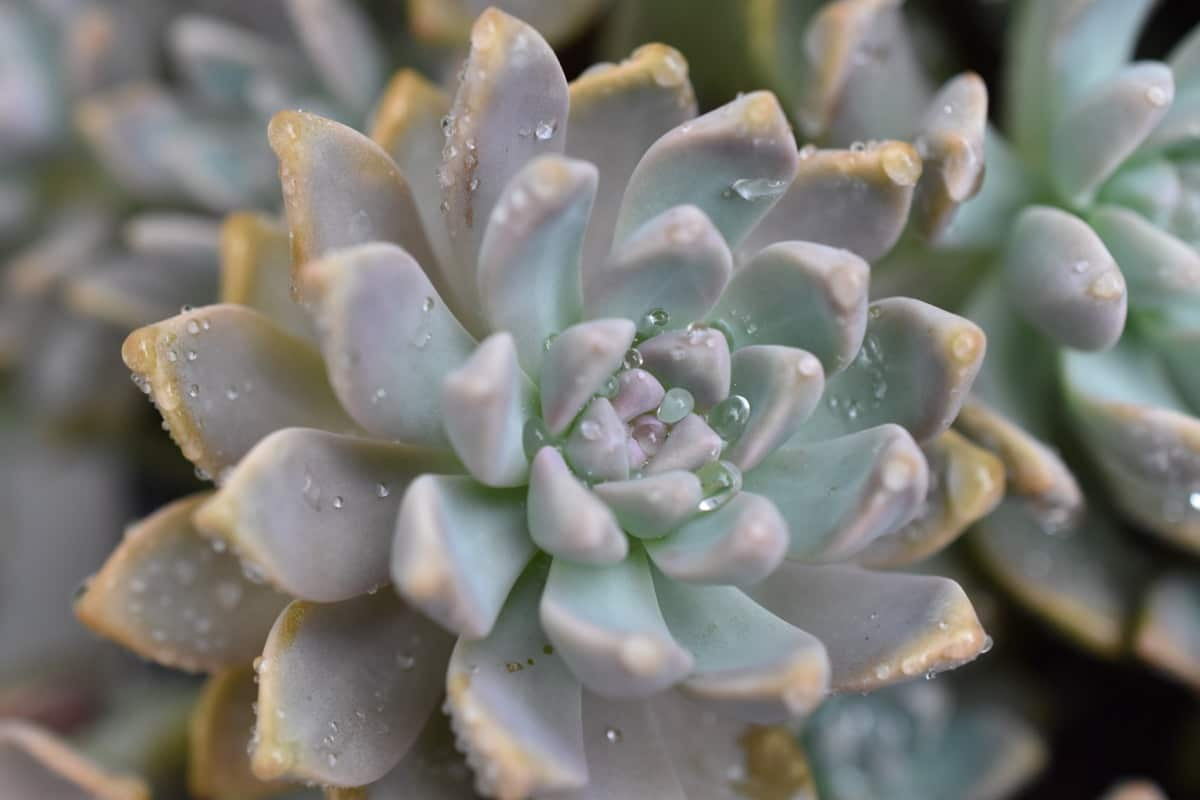
Vertical gardening systems offer a unique way to grow succulents hydroponically. These systems typically consist of stacked layers or towers where plants are grown vertically rather than horizontally. They can be space-saving solutions while adding an aesthetic appeal to any indoor garden. Choosing the best hydroponic system for succulents depends on space availability, personal preferences, and budget constraints.
Hydroponic Succulent Care Tips for Beginners
When it comes to caring for hydroponic succulents, there are a few key tips that can help beginners find success. First and foremost, make sure you choose the right type of succulent for hydroponic growing. Some varieties thrive in water-based systems, while others prefer a more traditional soil medium.
Next, pay close attention to watering your hydroponic succulents. Unlike their soil-dwelling counterparts, these plants require less frequent watering. Overwatering causes root rot and other issues, so striking the right balance is important. Another crucial aspect of care is providing adequate light and temperature conditions. Most succulents love bright indirect sunlight, so placing them near a south-facing window or using grow lights can help ensure they receive enough light energy.
In addition to lighting, maintaining proper nutrient levels is essential for healthy growth. Choose a balanced fertilizer formulated for hydroponic use and follow the instructions carefully. Regular pruning and propagating are also important aspects of care. Trimming away dead leaves or stems promotes new growth and maintains the overall health of your plants. Keep an eye out for common issues such as pests or diseases.
Choosing the Right Nutrients for Hydroponic Succulents
You should consider a few factors when choosing the right nutrients for your hydroponic succulents. First and foremost, you’ll want to look for a nutrient solution specifically designed for succulent plants. These solutions are typically balanced in their nitrogen, phosphorus, and potassium (NPK) ratios, essential for healthy growth. In addition to NPK ratios, it’s important to consider the micronutrients that succulents need. Micronutrients like iron, manganese, and zinc play vital roles in various metabolic processes within the plant.
Look for a nutrient solution that includes these micronutrients as well. Another factor to consider is whether you prefer organic or synthetic nutrients. Organic options tend to be derived from natural sources such as kelp or fish emulsion and may provide additional benefits like improved soil structure. Synthetic nutrients are chemically formulated and can offer precise control over nutrient levels.
Keep in mind that different stages of plant growth require different nutrient formulations. Look for a nutrient system that offers separate formulas for vegetative growth and flowering/fruiting stages. By carefully considering these factors and selecting the appropriate nutrient solution for your hydroponic succulents, you can ensure they receive all the necessary elements for healthy growth without any unnecessary additives or deficiencies.
In case you missed it: Key Rules to Grow String of Pearls Succulent Indoors: Explained in Simple Steps
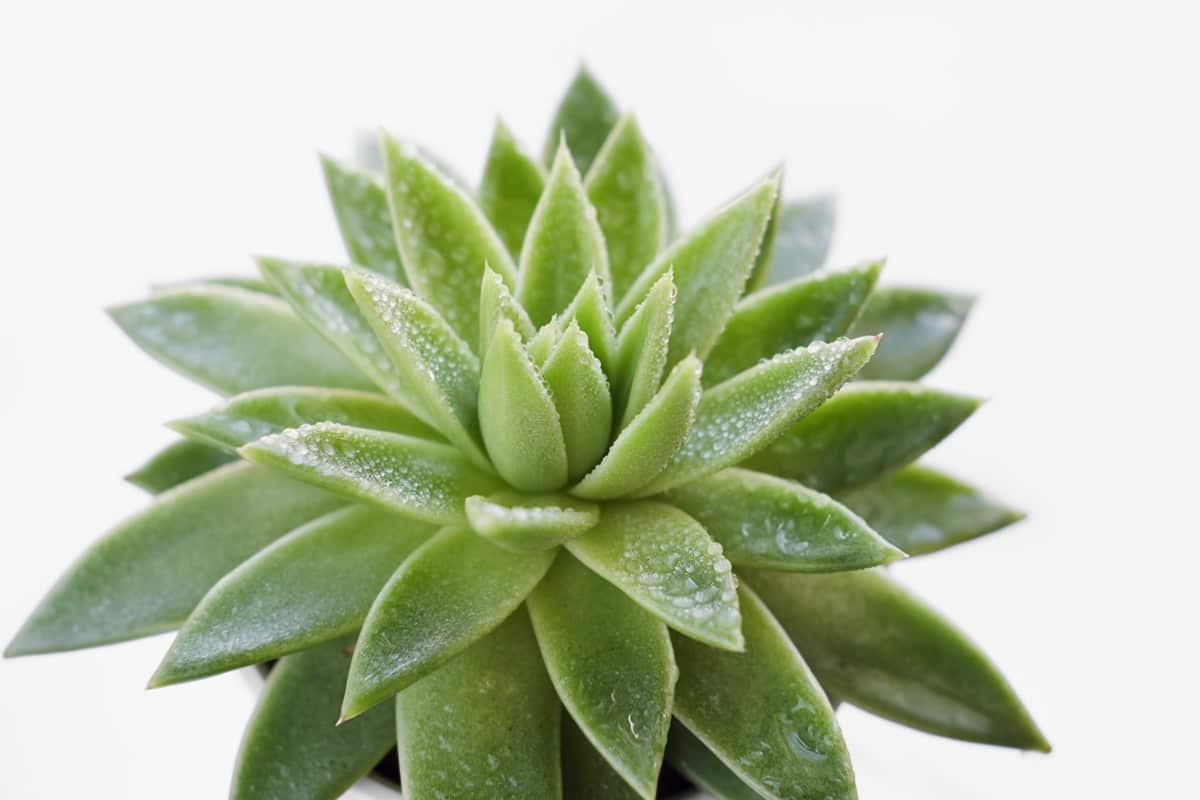
Maintaining Proper pH Levels in Hydroponic Succulent Systems
One key aspect of successful hydroponic succulent cultivation is maintaining the proper pH levels in your system. The pH level determines the acidity or alkalinity of the nutrient solution that feeds your plants. Succulents typically prefer a slightly acidic to neutral environment, with a pH range between 5.5 and 6.5.
Regularly monitor and adjust the pH levels to ensure optimal growth and health. Start by testing the pH of your nutrient solution using a digital meter or test strips specifically designed for hydroponics. If the pH is too high or low, make adjustments as needed. If you need to raise the pH, consider adding small amounts of baking soda or potassium carbonate to increase alkalinity.
On the other hand, if you need to lower it, use citric acid or phosphoric acid solutions. Remember that maintaining stable pH levels is crucial because extreme shifts can stress your succulents and hinder their ability to absorb nutrients properly.
You’ll provide an optimal growing environment for healthy and vibrant hydroponic succulents by diligently monitoring and adjusting your system’s pH levels.
Preventing Root Rot in Hydroponic Succulents
Root rot can be a major challenge when growing succulents hydroponically. The excess moisture in the system can lead to fungal and bacterial growth, causing the roots to rot and ultimately killing the plants. However, there are several measures you can take to prevent this issue and ensure your hydroponic succulents thrive. It’s crucial to establish a well-draining system for your succulents. This means using a suitable growing medium that allows water to flow easily.
Avoid heavy or compacted substrates that retain too much moisture, as they create an ideal environment for root rot. Additionally, maintaining proper watering practices is essential. Succulents prefer infrequent but deep watering rather than constant moisture. Allow the top layer of the growing medium to dry out between watering sessions, ensuring that excess water drains away completely. Another effective way to prevent root rot is by providing adequate airflow around the roots.
This can be achieved by placing fans near your hydroponic setup or using air stones in nutrient solutions. Regular monitoring of pH levels is also crucial in preventing root rot. Monitor your system’s pH and adjust it within the recommended range for succulent cultivation. Practicing good hygiene is important in keeping root rot at bay. Cleanliness goes hand-in-hand with disease prevention; regularly clean and sterilize your equipment and tools to minimize any potential sources of contamination.
In case you missed it: Most Common Succulent Propagation Mistakes: Every Gardener Should Know
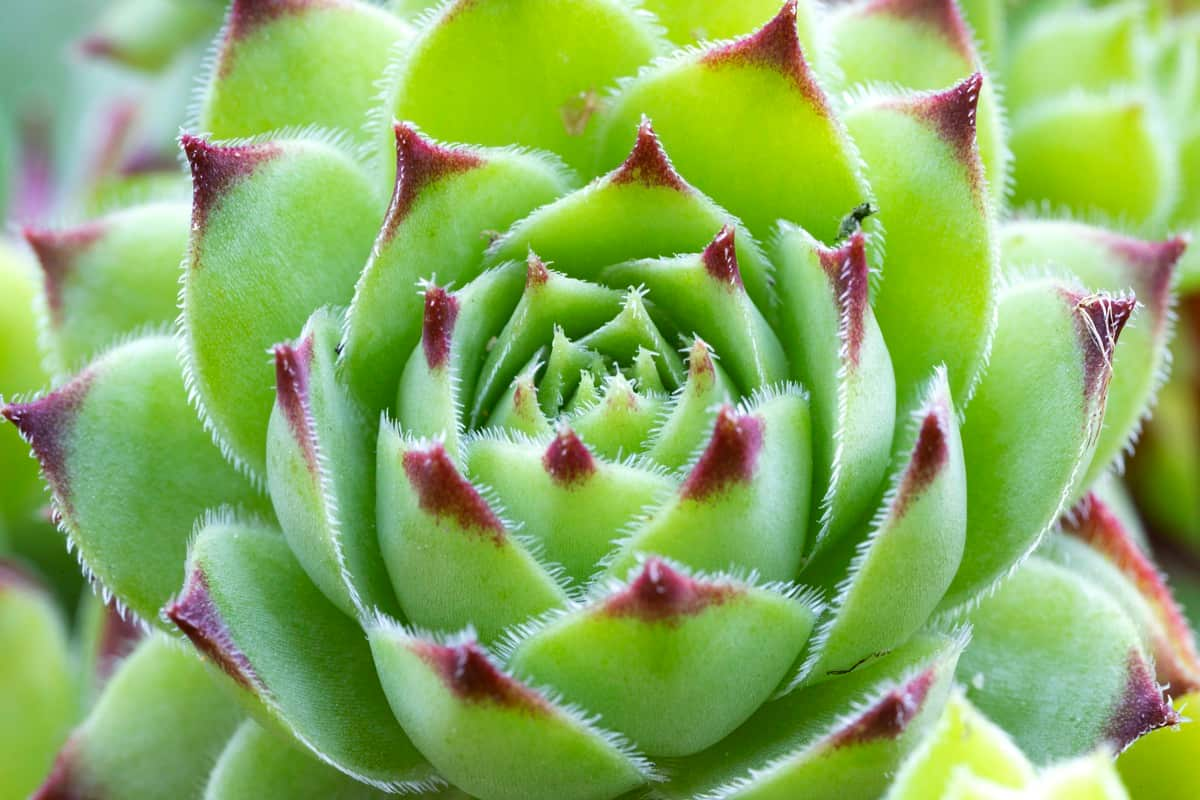
Managing Light and Temperature for Hydroponic Succulents
Light and temperature are crucial factors when successfully growing hydroponic succulents. These plants thrive in bright, indirect light, so providing them with the right amount of illumination is important. Place your hydroponic setup near a window with plenty of sunlight, or use artificial grow lights specifically designed for succulent cultivation.
Regarding temperature, most succulents prefer a range between 15°C – 27°C. However, different species may have specific temperature preferences, so it’s essential to research the ideal conditions for your particular succulent variety. During warmer months, pay attention to signs of heat stress, such as wilting or leaf discoloration. If temperatures rise above the recommended range, consider using shading techniques or moving your hydroponic system to a cooler location.
Similarly, during colder months, ensure that the ambient temperature doesn’t drop too low. Succulents are sensitive to frost and freezing temperatures, which can cause damage or even kill them. Use heaters or insulation if necessary to maintain a suitable plant environment. Balancing light exposure and temperature control is key to ensuring healthy growth for your hydroponic succulents.
Pruning and Propagating Hydroponic Succulents
Pruning and propagating hydroponic succulents is an essential part of their care routine. Pruning helps maintain the shape and size of your plants, while propagation allows you to expand your collection or share it with friends. When pruning, using clean, sharp scissors or shears is important to avoid damaging the plant. Start by removing dead or yellowing leaves at the base of the stem. This will improve air circulation and prevent rotting.
Hydroponic succulent propagation is an exciting and rewarding way to expand your collection of these stunning plants. You can easily grow new succulents from cuttings or leaves in a hydroponic system with the right techniques. Select a healthy, strong stem and leaves to propagate your succulents hydroponically. Carefully take cuttings from the parent plant using clean scissors at a 45-degree angle. Make sure each cutting has at least two sets of leaves.
In case you missed it: How to Grow Big Size Succulents Faster: DIY Guide for Beginners
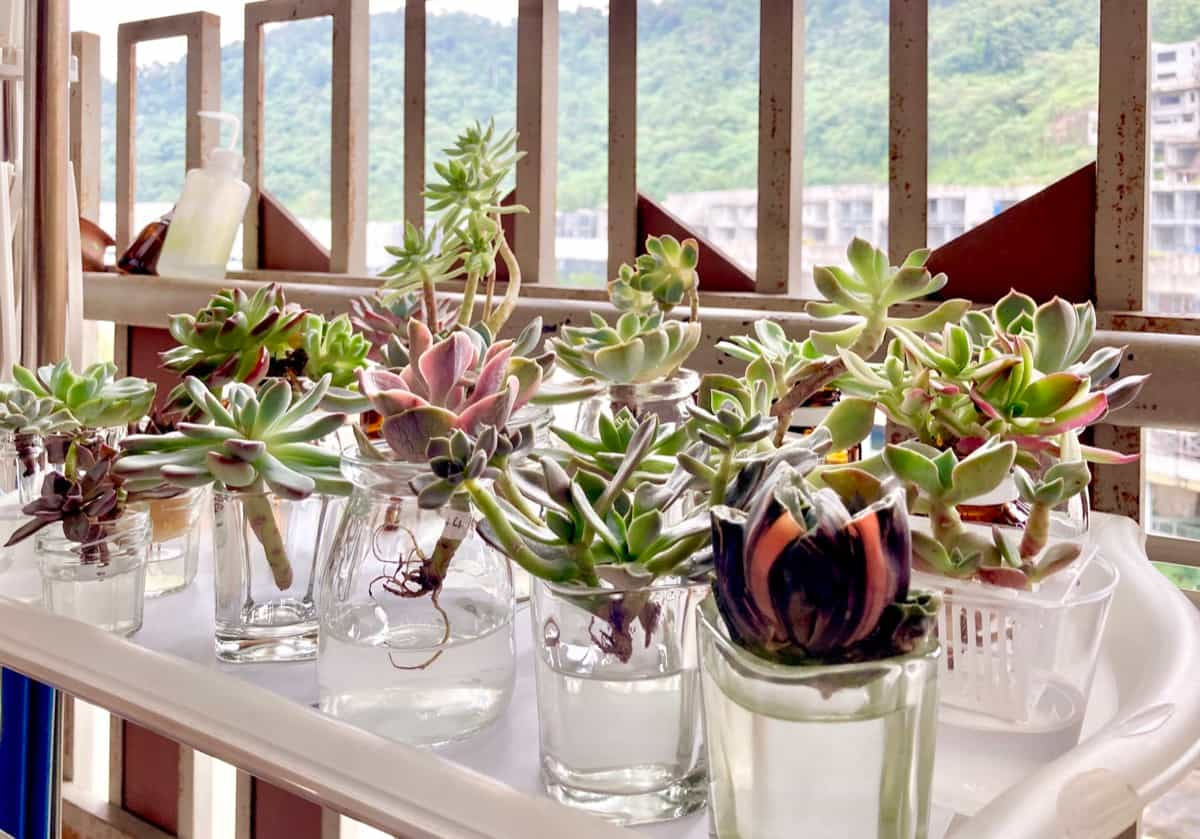
Once you have your cuttings ready, it’s time to prepare them for rooting. Remove any lower leaves on the stem, leaving about an inch bare. This will provide space for roots to develop without rotting. Next, place the prepared cuttings into a container filled with water just enough to cover the bare stem. It’s crucial not to submerge the entire cutting as this may lead to rotting.
Place your container in a bright location but away from direct sunlight, which can cause burning or overheating. Within weeks, tiny roots should start forming at the base of each cutting. Remember to change out the water every few days and watch for any signs of decay or mold growth on your cuttings. If necessary, gently wipe any excess moisture using a clean cloth or tissue. Once you see well-developed roots on your succulent cuttings, they are ready for transplanting into a hydroponic system filled with a nutrient-rich solution.
Troubleshooting Common Issues in Hydroponic Succulent Cultivation
Hydroponic succulent cultivation can sometimes present challenges, but with a little troubleshooting, you can overcome them and ensure your plants thrive. One common issue is over-watering. While succulents need water, they don’t tolerate soggy roots well. Ensure that your hydroponic system has proper drainage to prevent waterlogged conditions. Another problem growers may encounter is nutrient burn.
This occurs when too many nutrients are provided, leading to leaf discoloration or even plant death. To avoid this issue, carefully follow the recommended nutrient dosage for succulents and monitor their health regularly. Pests can also be a concern in hydroponic systems. Aphids, spider mites, or mealybugs might invade your plants if not properly managed. Regularly inspect your succulents for signs of infestation and take appropriate measures like using insecticidal soap or introducing beneficial insects.
Lack of sufficient light can lead to elongated and weak growth in succulents. Make sure to provide adequate artificial lighting if natural sunlight is limited in your indoor setting.
Temperature fluctuations can stress out succulents. Avoid placing them near drafty windows or areas with extreme temperature variations.
In case you missed it: How to Identify and Treat Powdery Mildew on Succulent Plants: Preventive Strategies
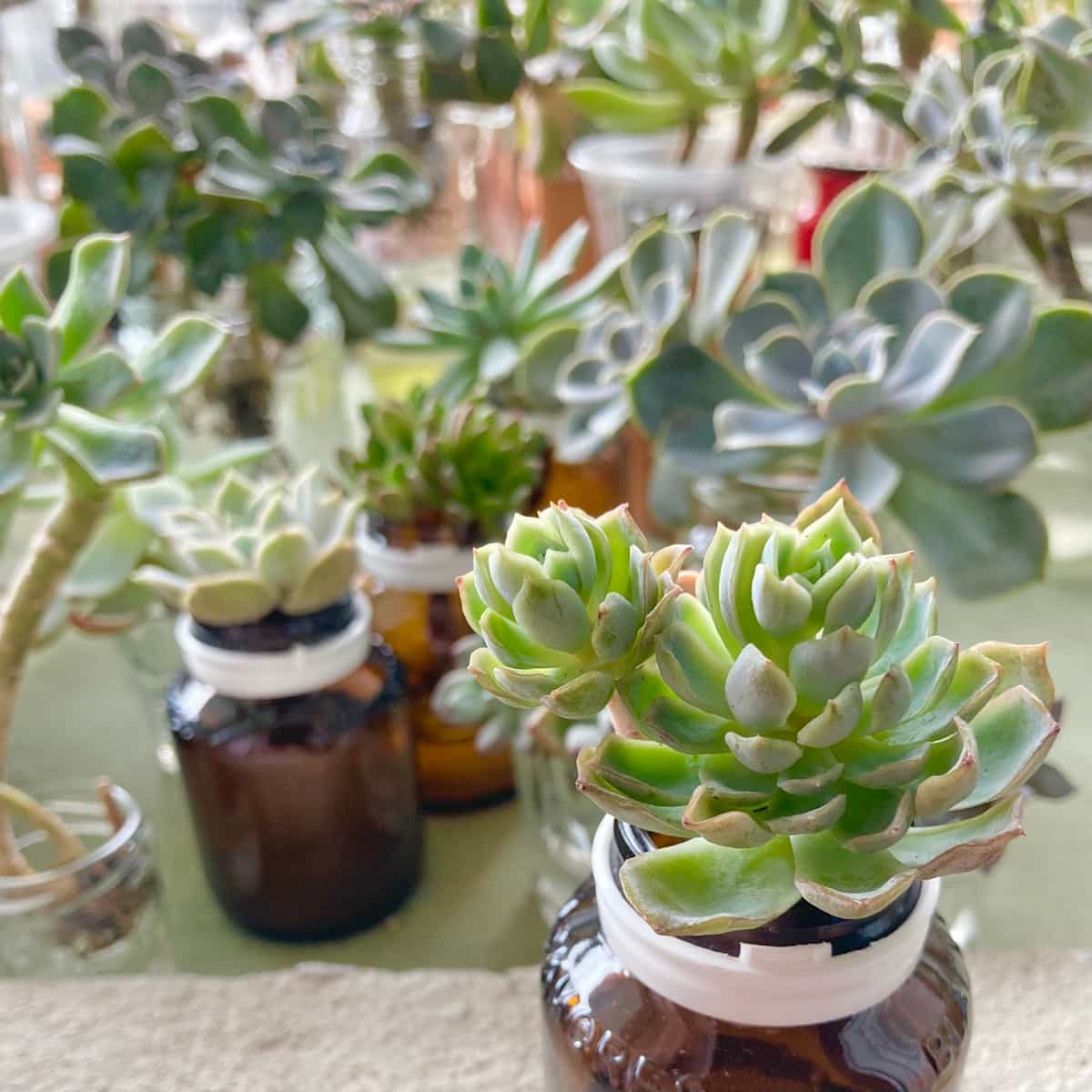
Conclusion
Hydroponic succulents are a modern and innovative approach to growing these resilient plants. Unlike traditional gardening methods that rely on soil, hydroponics involves cultivating plants in nutrient-rich water solutions, allowing them to absorb the essential minerals they need for growth. This method eliminates the need for soil while providing precise control over the plant’s environment.
Growing succulents in water can be a rewarding and unique way to enjoy these beautiful plants. With the benefits of water conservation, space efficiency, and control over nutrient intake, it’s no wonder why more and more people are turning to this cultivation method.
- Growing Gold: Essential Techniques for Planting Pineapples
- How to Make Kalanchoe Plant Bushy: Home Remedies and Solutions
- 11 Reasons Why Your Gardenia is Not Blooming: Home Remedies and Solutions
- Eco Elegance: The Guide to Designing a Drought-Tolerant Landscape
- Gardening on a Slope: Strategies for Hillside Landscaping
- Nourish and Flourish: Top Organic Mulches for Thriving House Plants
- Everything You Want to Know about Indian Mogra Flower: Discover Uses and Growing
- Green Thumb Success: Expert Tips for Cultivating Greenhouse Pumpkins All Year Round
- Maximize Growth & Flavor: The Ultimate Guide to Companion Planting in Herb Gardens
- How to Control Rhododendron Problems Naturally: Home Remedies and Organic Ways to Fix Them
- Natural Magic: The Remarkable Benefits of Cinnamon for Plants
- Best Steps to Revive Dying Tulip with Natural and Organic Treatment
- 10 Reasons Why Your Angel Trumpet is Not Blooming: Remedies and Treatment
- How to Fix Periwinkle Leaf and Flower-Related Problems: Natural Remedies and Solutions
- How to Fix Zinnias Leaf and Flower Problems: Discover Natural and Home Remedies
- Organic Steps to Induce Lemon Tree Flowers: A Comprehensive Guide
- Bloom Booster: Crafting the Perfect Homemade Bougainvillea Fertilizer
- Optimizing Growth: A Guide to Applying NPK Fertilizer for Potted Plants
- 10 Best Homemade Fertilizers for Rubber Plant: DIY Recipes and Application Method
- How to Boost Female Pumpkin Flowers: Effective Steps for More Flowers and High Yields
- Transform Your Indoor Garden: Top Benefits of Pink Salt for Houseplants
- 10 Best Homemade Fertilizers for Peacock Plants (Calathea): Easy DIY Guide
- Unlock Blooms: 9 Reasons Why Your Potted Chrysanthemum is Not Blooming
- 8 Reasons Why Your Potted Hibiscus is Not Blooming: Fix it with Simple Solutions
- Unlock Blooms: 9 Key Reasons Your Potted Frangipani Won’t Flower
- 10 Reasons Why Is My Ice Plant Not Blooming: Remedies and Treatment
- 10 Reasons Why My Potted Hydrangea Not Blooming: Treatment and Remedies
- 10 Reasons Why is My Wisteria Not Blooming: Remedies and Treatment
- 10 Reasons Why is My Goldfish Plant Not Blooming: Remedies and Treatment
- Maximize Your Space: Ultimate Guide to Balcony Gardening with Grow Bags
- 10 Reasons Why Your Iris is Not Blooming: Remedies and Treatment
- 10 Reasons Why Your Anthurium Plant is Not Blooming: Treatment and Remedies
- 10 Reasons Why Your Aquaponic Plants Are Not Flowering: Remedies and Treatment
- 10 Reasons Why Your Agapanthus is Not Flowering: Remedies and Treatment
- Ultimate Guide to Brown Turkey Fig: Steps to Growing Brown Turkey Figs
- How to Grow Acai Berry: Propagation, Planting, and Care
It was a very useful article. Thank you. I could not find optimal growth element ratios for different species. For example, Echeveriva, Sempervivum, Cactus.
The optimum element values of Haworthia
Nitrogen (N) 100
Phosphorus (P) 13-19
Potassium (K) 45-80
Sulfur (S) 6-9
Magnesium (Mg) 5-15
Calcium (Ca) 5-15
Iron (Fe) 0.7
Manganese (Mn) 0.4
Boron (B) 0.2
Zinc (Zn) 0.06
Copper (Cu) 0.03
Chlorine (Cl) 0.03
Molybdenum (Mo) 0.003
Optional: Silicon (Si) 86
Source: Haworthia.com
Can you help me with this? Or can you give a source? Thank you…
I found this article to be most helpful for switching my soil succulents to hydroponics!! thank you!!
Good article, missing pictures.